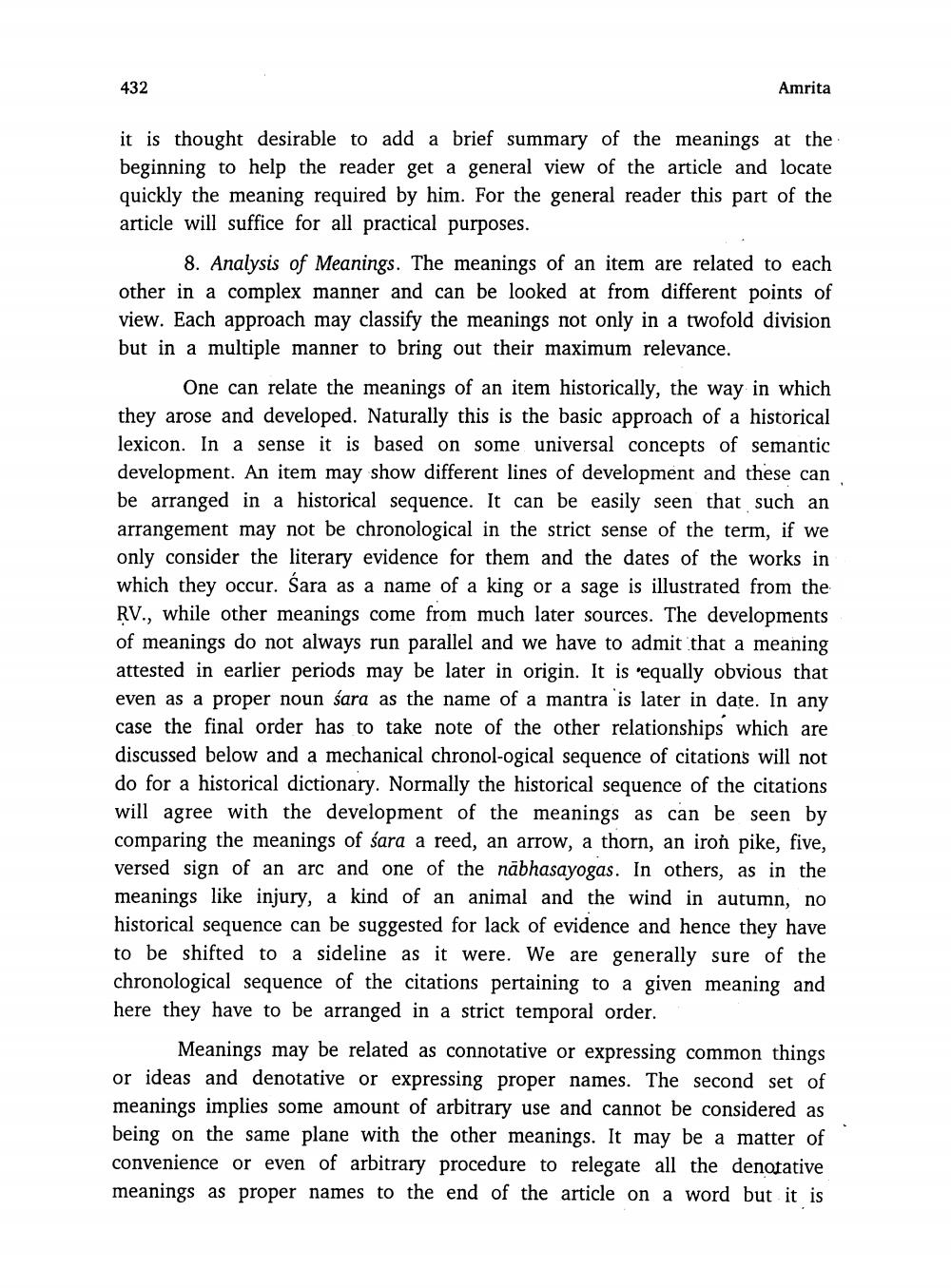________________
432
Amrita
it is thought desirable to add a brief summary of the meanings at the beginning to help the reader get a general view of the article and locate quickly the meaning required by him. For the general reader this part of the article will suffice for all practical purposes.
8. Analysis of Meanings. The meanings of an item are related to each other in a complex manner and can be looked at from different points of view. Each approach may classify the meanings not only in a twofold division but in a multiple manner to bring out their maximum relevance.
One can relate the meanings of an item historically, the way in which they arose and developed. Naturally this is the basic approach of a historical lexicon. In a sense it is based on some universal concepts of semantic development. An item may show different lines of development and these can be arranged in a historical sequence. It can be easily seen that such an arrangement may not be chronological in the strict sense of the term, if we only consider the literary evidence for them and the dates of the works in which they occur. Śara as a name of a king or a sage is illustrated from the RV., while other meanings come from much later sources. The developments of meanings do not always run parallel and we have to admit that a meaning attested in earlier periods may be later in origin. It is equally obvious that even as a proper noun sara as the name of a mantra is later in date. In any case the final order has to take note of the other relationships which are discussed below and a mechanical chronol-ogical sequence of citations will not do for a historical dictionary. Normally the historical sequence of the citations will agree with the development of the meanings as can be seen by comparing the meanings of sara a reed, an arrow, a thorn, an iron pike, five, versed sign of an arc and one of the nābhasayogas. In others, as in the meanings like injury, a kind of an animal and the wind in autumn, no historical sequence can be suggested for lack of evidence and hence they have to be shifted to a sideline as it were. We are generally sure of the chronological sequence of the citations pertaining to a given meaning and here they have to be arranged in a strict temporal order.
Meanings may be related as connotative or expressing common things or ideas and denotative or expressing proper names. The second set of meanings implies some amount of arbitrary use and cannot be considered as being on the same plane with the other meanings. It may be a matter of convenience or even of arbitrary procedure to relegate all the denotative meanings as proper names to the end of the article on a word but it is




